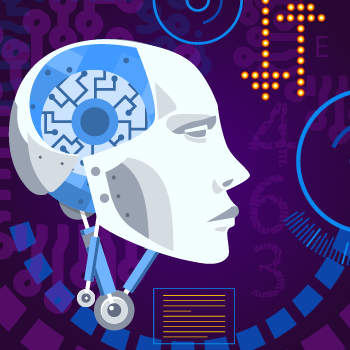Computational thinking has been booming in education since it was included in the new educational curricula. Here, it is proposed that computational skills are worked on transversally like other subjects, but… What is Computational Thinking?
Definitions of Computational Thinking
The first definition was introduced by Jeannette Wing in 2006: “Computational thinking involves solving problems, designing systems, and understanding human behavior, drawing on concepts fundamental to computer science. It includes a range of mental tools that reflect the breadth of the field of computer science.” [1]
Later, in 2010, the same author would explain that “Computational thinking is the thought processes involved in formulating problems and their solutions so that the solutions are represented in a form that can be effectively carried out by an information processing agent.” [2]
However, Basogain, Xabier and Olabe, in 2015, add a definition in which they explain in more detail how those same problems that are managed to be solved with these mental processes are present in everyday life: “Computational thinking is a methodology based on the implementation of the basic concepts of computer science to solve everyday problems, design domestic systems and perform routine tasks. This new way of approaching problems makes it possible to effectively and successfully solve problems that are otherwise not tractable by a person.” [3]
In the same year, 2015, Pérez and Roig-Vila point out what concepts are involved in Computational Thinking: “It is a type of thinking that is related to mathematical, logical and critical thinking, in which skills such as pattern recognition, abstraction and modeling are involved; whose purpose is to propose solutions to real problems of everyday life by applying computational tools.” [4]
Finally, we would like to refer to the 2019 definition that conceptualizes computational thinking as a capacity that has computational skills. Moreno-León, Robles, Román-González, Rodríguez-García determine the following: “It would be the ability to formulate and represent problems to solve them by making use of tools, concepts and practices typical of the computing discipline, such as abstraction, decomposition or the use of simulations.” [5]
In other words, computational thinking is a mental ability that allows us to analyze and solve problems systematically and logically, using tools and techniques specific to the field of computer science. It is an essential skill in the digital world in which we live, as it allows us not only to better understand how computers and technology work, but also to apply that knowledge in our day-to-day lives to solve problems and make decisions more effectively.
Computational Thinking Skills
Different authors suggest a wide variety of skills related to the acquisition of Computational Thinking, such as:
- Problem solving.
- Examination of data patterns and questioning evidence.
- Collecting, analyzing and representing data, decomposing problems.
- Use of algorithms and procedures.
- Carrying out simulations.
- Use of computer models to simulate scenarios.
- Working with open problems.
- Reasoning about abstract objects.
In conclusion, we can see that computational thinking is a form of reasoning and problem solving, which is inspired by the way computers process information. It involves the application of programming and computer science techniques and strategies. It includes different skills such as decomposition, abstraction, pattern identification and algorithm creation.

In Smartick there is a wide variety of activities that promote the development of computational thinking. Enter Smartick and try it for free.
Sources Consulted
[1] Wing, J. 2006. Computational Thinking.
[2] Wing, J. 2010. Computational Thinking
[3] Basogain, Xabier & Olabe-Basogain, 2015. Pensamiento Computacional a través de la Programación: Paradigma de Aprendizaje. Revista de Educación a Distancia (RED).
[4] Pérez Narváez, Hamilton & Roig-Vila, Rosabel, 2015. Entornos de programación no mediados simbólicamente para el desarrollo del pensamiento computacional. Una experiencia en la formación de profesores de Informática de la Universidad Central del Ecuador. Revista de Educación a Distancia (RED).
[5] Moreno-León, J., Robles, G., Román-González, M. y Rodríguez, J.D., 2019.Not the same: a text network analysis on computational thinking definitions to study its relationship with computer programming. RIITE.Revista Interuniversitaria de Investigación en Tecnología Educativa, 7,26-35.
Learn More:
- Smartick Coding and the Importance of Programming
- Smartick Supports the Hour of Code
- Cognitive Flexibility: Benefits and Training with Smartick Brain Games
- Theoretical Framework of the Singapore Method
- 5 Math Activities for Preschoolers with Examples







